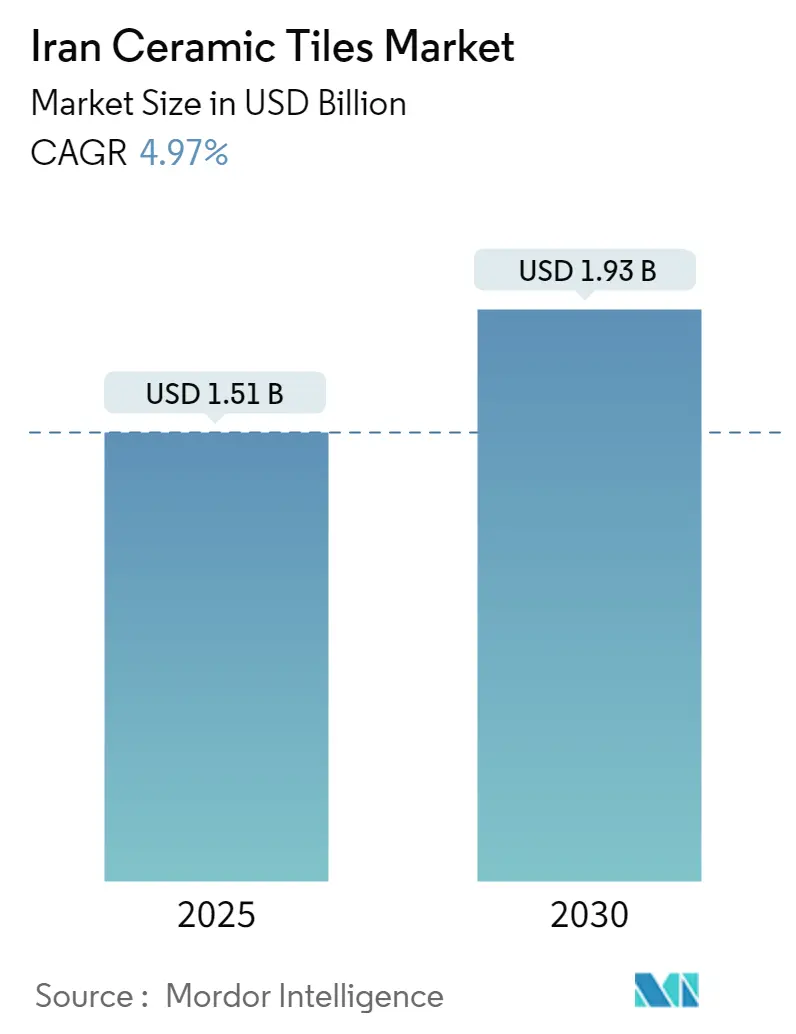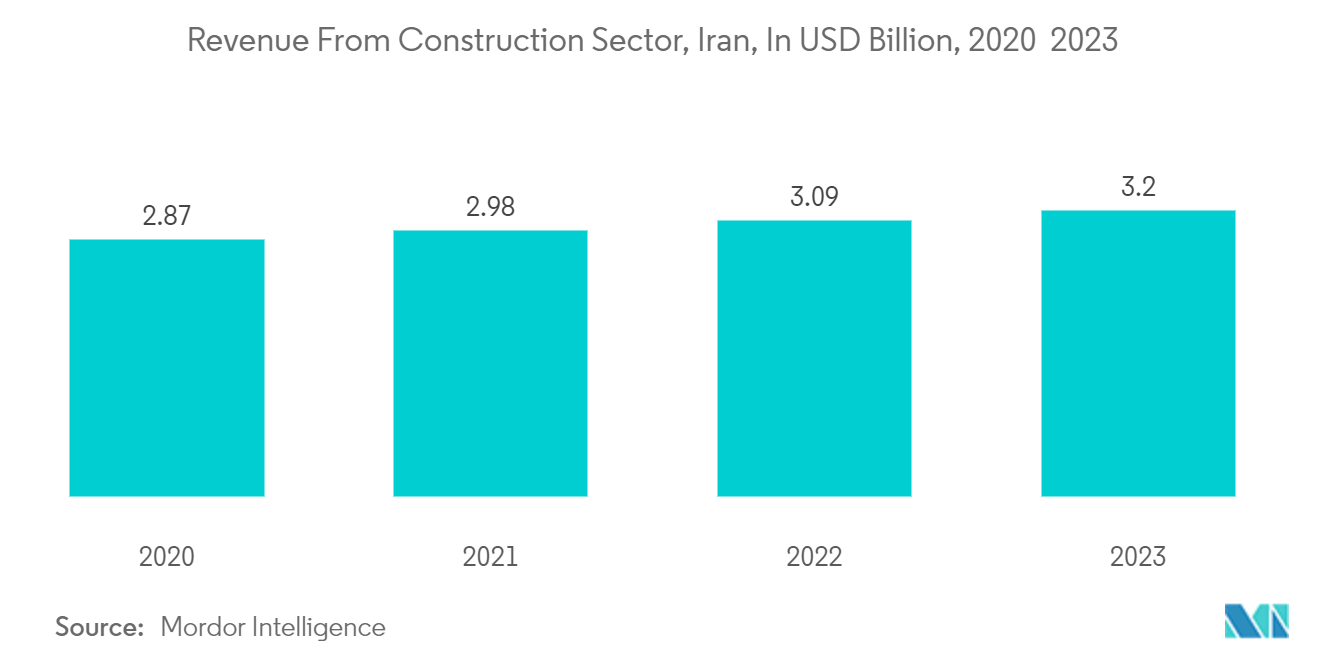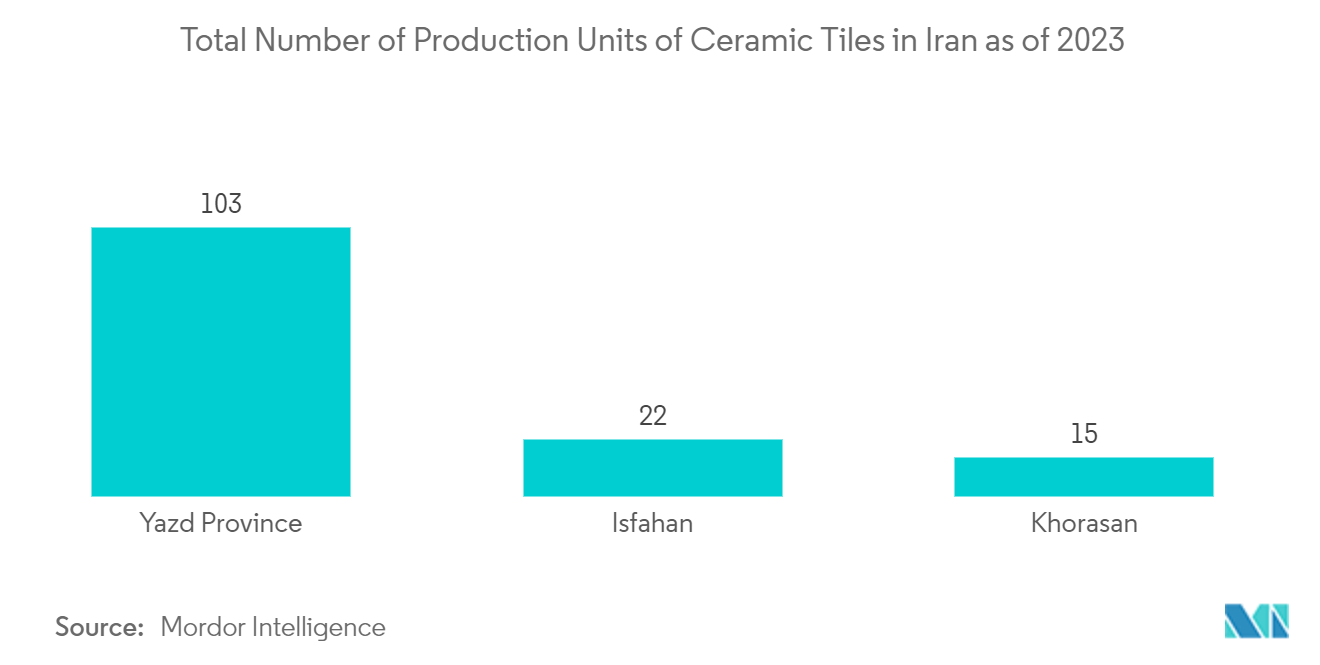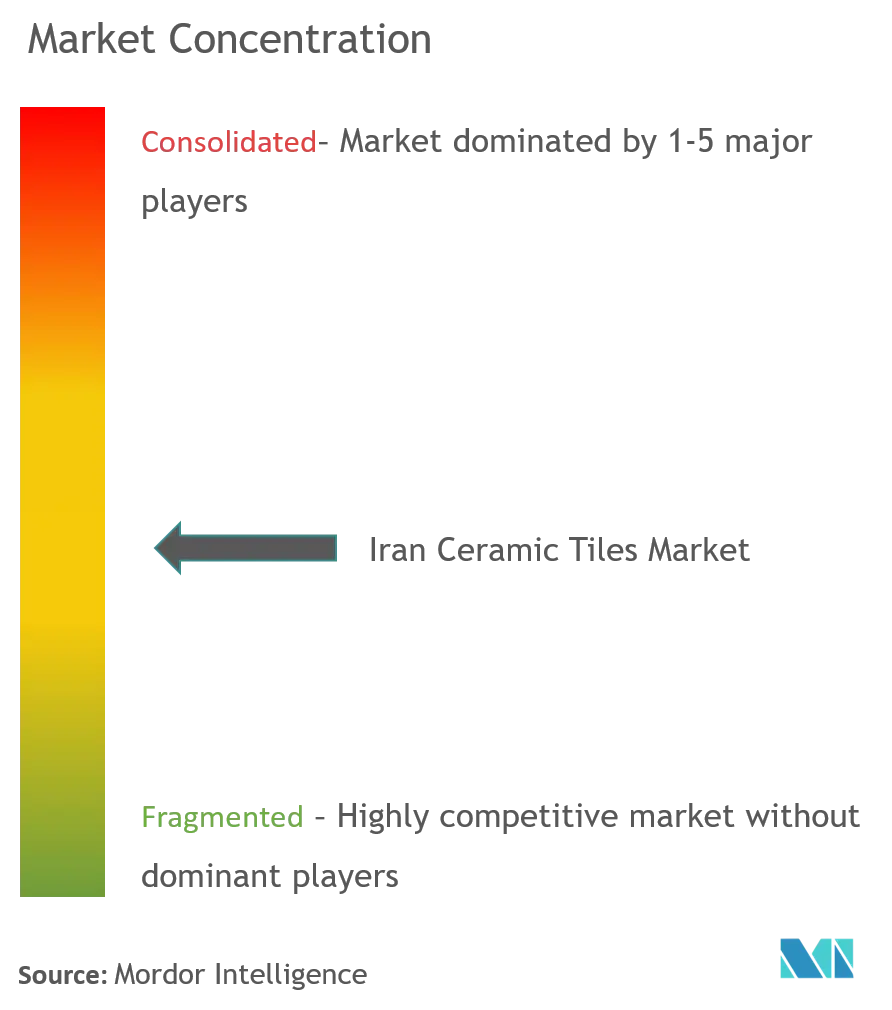Iran Ceramic Tiles Market Analysis
The Iran Ceramic Tiles Market size is estimated at USD 1.51 billion in 2025, and is expected to reach USD 1.93 billion by 2030, at a CAGR of 4.97% during the forecast period (2025-2030).
Iranian ceramic tiles have a strong presence in numerous countries, primarily neighbouring markets such as Iraq, Pakistan, Afghanistan, and Central Asian nations. Iraq notably emerges as the largest importer, accounting for a significant portion of Iran's ceramic tile exports. However, despite promising export prospects, domestic challenges persist. The construction sector's recession has led to excess inventory and intensified competition, resulting in price reductions and compromised product quality, which poses a threat to industry standards.
Despite these challenges, opportunities exist for the Iran Ceramic Tiles Market. Leveraging technological advancements and innovation can enhance product quality and competitiveness, mitigating the threat posed by substandard products. Moreover, diversifying export destinations beyond neighbouring countries could reduce dependency and expand market reach. Additionally, targeted marketing strategies and investments in infrastructure could stimulate domestic demand and revitalize the construction sector, driving growth in the ceramic tiles market. Stakeholders can navigate the changing terrain and ensure the sustainable growth of the Iranian ceramic tiles industry by tackling these obstacles head-on and seizing available opportunities.
Iran Ceramic Tiles Market Trends
Rising Construction Activity is Driving the Market
Iran's construction sector is expected to grow by 2.5% in real terms in 2023, following annual growth of 1.8% in 2021. It is then expected to register an annual average growth of 3.6% during 2023-26, supported by government investments in the energy, oil and gas, petrochemicals, infrastructure, and industrial sector. Construction in Iran is expected to grow 8.4% in 2023, but that figure is contingent on the revival of the Iran nuclear deal in the first half of the year.
The sector's output will be supported by government expenditure under the 2022 budget announced in December 2021. The government released a budget of IRR 36.3 quadrillion (USD 111.69 billion), projecting IRR 9.3 quadrillion (USD 28.61 billion) in revenue and IRR 13.9 quadrillion (USD 42.76 billion) in spending. It will benefit the ceramic tiles market in Iran.
Yazd Povince Records the Highest Production of Ceramic Tiles
The Ministry of Industry, Mines, and Trade reveals that the per capita production of ceramic tiles in Iran is 10,000 sq m. One of the highest-producing countries, like Italy and Spain, are producing 25,000 sq m per worker, which Iran aims to reach in the coming years. The country's production is led by Yazd province, which includes the highest number of production units of ceramic tiles with around 101 production units, followed by Isfahan with 21 and Khorasan Razavi with 14 units. The country is focusing on improving its existing infrastructure to achieve its aim by bridging the gap between the total number of production units in the Yazd province and the Isfahan region.
Iran Ceramic Tiles Industry Overview
Iran's Ceramic Tiles Market is semi-consolidated. The growth of the Iranian tile and ceramic industry balanced growth to match the needs of the domestic requirements and the possible export of this industry. The advent of technologies helped mass production of raw materials to utilize the workforce to enhance the ultimate production capacity.
Iran Ceramic Tiles Market Leaders
-
RAK Ceramics
-
Sina Tile and Ceramic co
-
Marjan Tile Co
-
Ceramara Co
-
Setareh Meybod Ceramic Tile Co
- *Disclaimer: Major Players sorted in no particular order
Iran Ceramic Tiles Market News
- In May 2023, Durst and Altadia Group have recently unveiled a strategic collaboration aimed at spearheading product innovation in the ceramic sector. In a notable move, Durst is set to deploy its cutting-edge technology, including the Gamma DG digital glazing machine and the Durst Gamma XD digital tile printer, at Esmalglass's technology center in Sassuolo. Esmalglass, a global leader in frits, glazes, colors, and inks for the ceramic industry, owns the center.
- August 2022: RAK Ceramics invested approximately USD 1.23 million in state-of-the-art manufacturing technologies and sustainability programs. As the demand for distinctive and sustainable ceramic floor tiles grows, RAK Ceramics' emphasis on sustainable production increases.
Iran Ceramic Tiles Industry Segmentation
Ceramic tiles are made up of sand, natural products, and clays. Once it is molded into a shape, then they are fired into a kiln. Ceramic tiles are durable, resistant to water, moisture, and fire, and cheap compared to other flooring products.
Iran's ceramic tiles market is segmented by product, application, construction type, and end-user. By product, the market is sub-segmented into glazed, porcelain, scratch-free, and other products. By application, the market is sub-segmented into floor tiles, wall tiles, and other applications. By construction type, the market is sub-segmented into new construction and replacement & renovation. By end-user, the market is sub-segmented into residential and commercial. The report offers market size and forecasts for the Iranian ceramic tiles market in value (USD) for all the above segments.
| By Product Type | Glazed |
| Porcelain | |
| Scratch Free | |
| Others | |
| By Application | Floor Tiles |
| Wall Tiles | |
| Other Tiles | |
| By Construction Type | New Construction |
| Replacement & Renovation | |
| By End-User Type | Residential |
| Commercial |
Iran Ceramic Tiles Market Research FAQs
How big is the Iran Ceramic Tiles Market?
The Iran Ceramic Tiles Market size is expected to reach USD 1.51 billion in 2025 and grow at a CAGR of 4.97% to reach USD 1.93 billion by 2030.
What is the current Iran Ceramic Tiles Market size?
In 2025, the Iran Ceramic Tiles Market size is expected to reach USD 1.51 billion.
Who are the key players in Iran Ceramic Tiles Market?
RAK Ceramics, Sina Tile and Ceramic co, Marjan Tile Co, Ceramara Co and Setareh Meybod Ceramic Tile Co are the major companies operating in the Iran Ceramic Tiles Market.
What years does this Iran Ceramic Tiles Market cover, and what was the market size in 2024?
In 2024, the Iran Ceramic Tiles Market size was estimated at USD 1.43 billion. The report covers the Iran Ceramic Tiles Market historical market size for years: 2020, 2021, 2022, 2023 and 2024. The report also forecasts the Iran Ceramic Tiles Market size for years: 2025, 2026, 2027, 2028, 2029 and 2030.
Our Best Selling Reports
Iran Ceramic Tile Industry Report
Statistics for the 2025 Iran Ceramic Tiles market share, size and revenue growth rate, created by Mordor Intelligence™ Industry Reports. Iran Ceramic Tiles analysis includes a market forecast outlook for 2025 to 2030 and historical overview. Get a sample of this industry analysis as a free report PDF download.

.webp)





